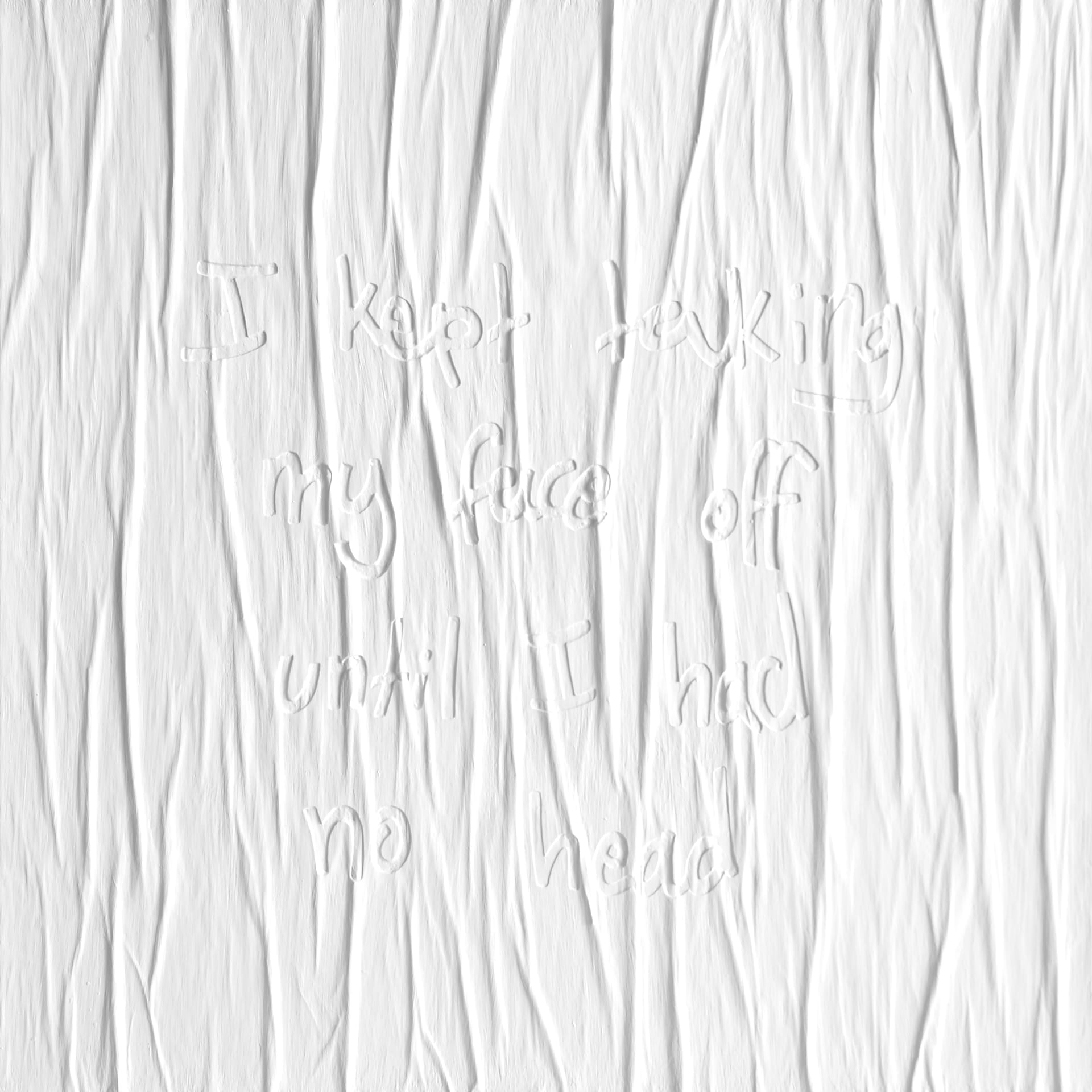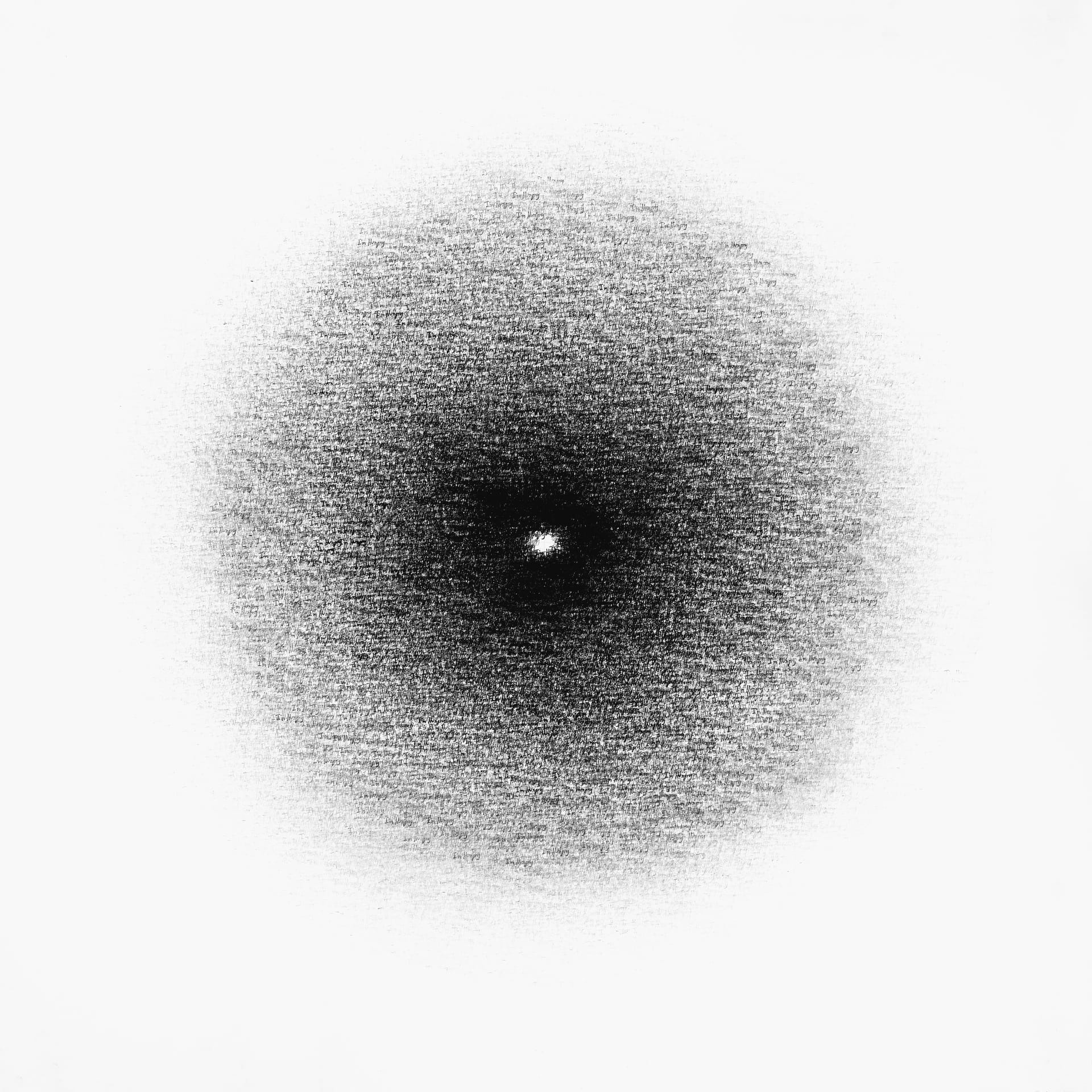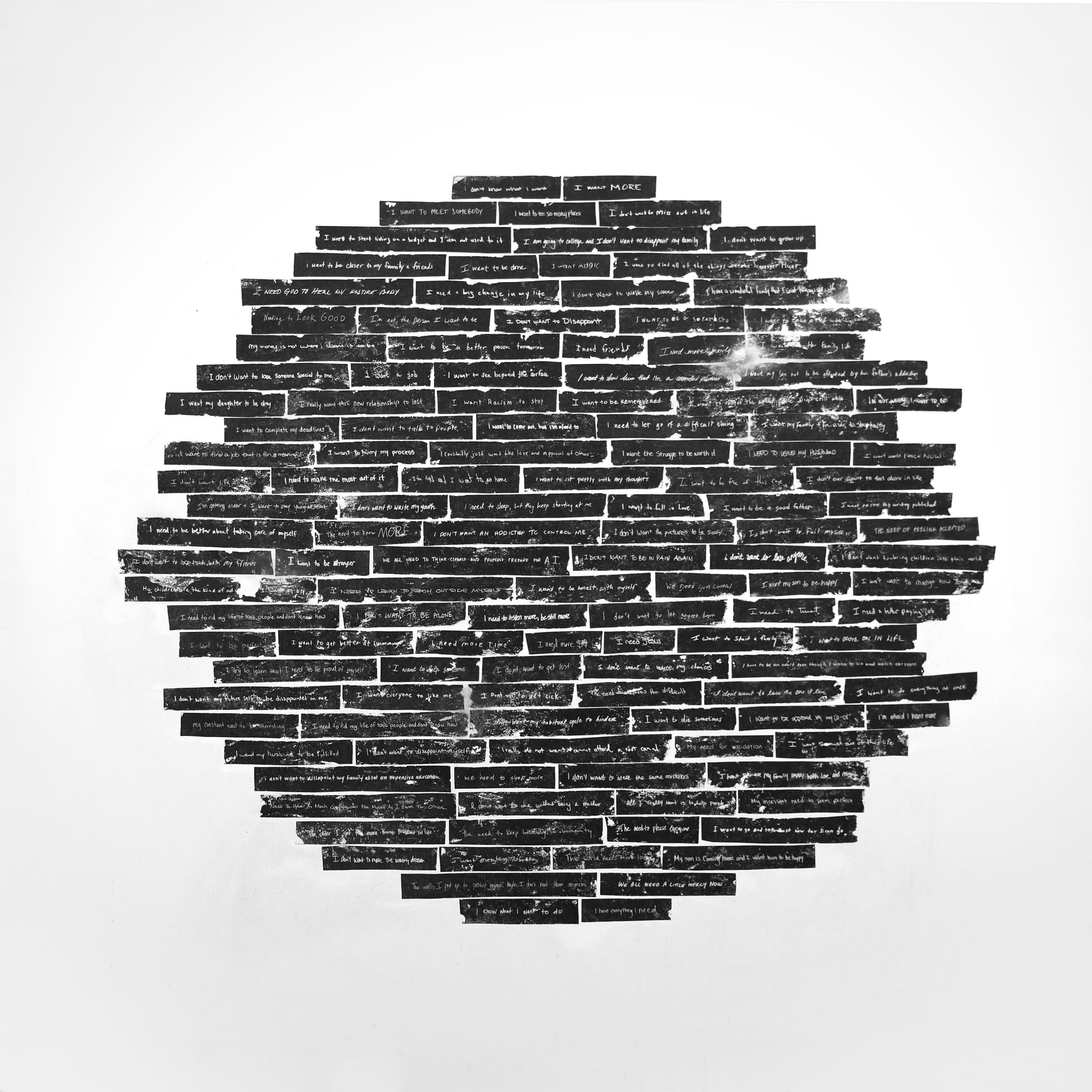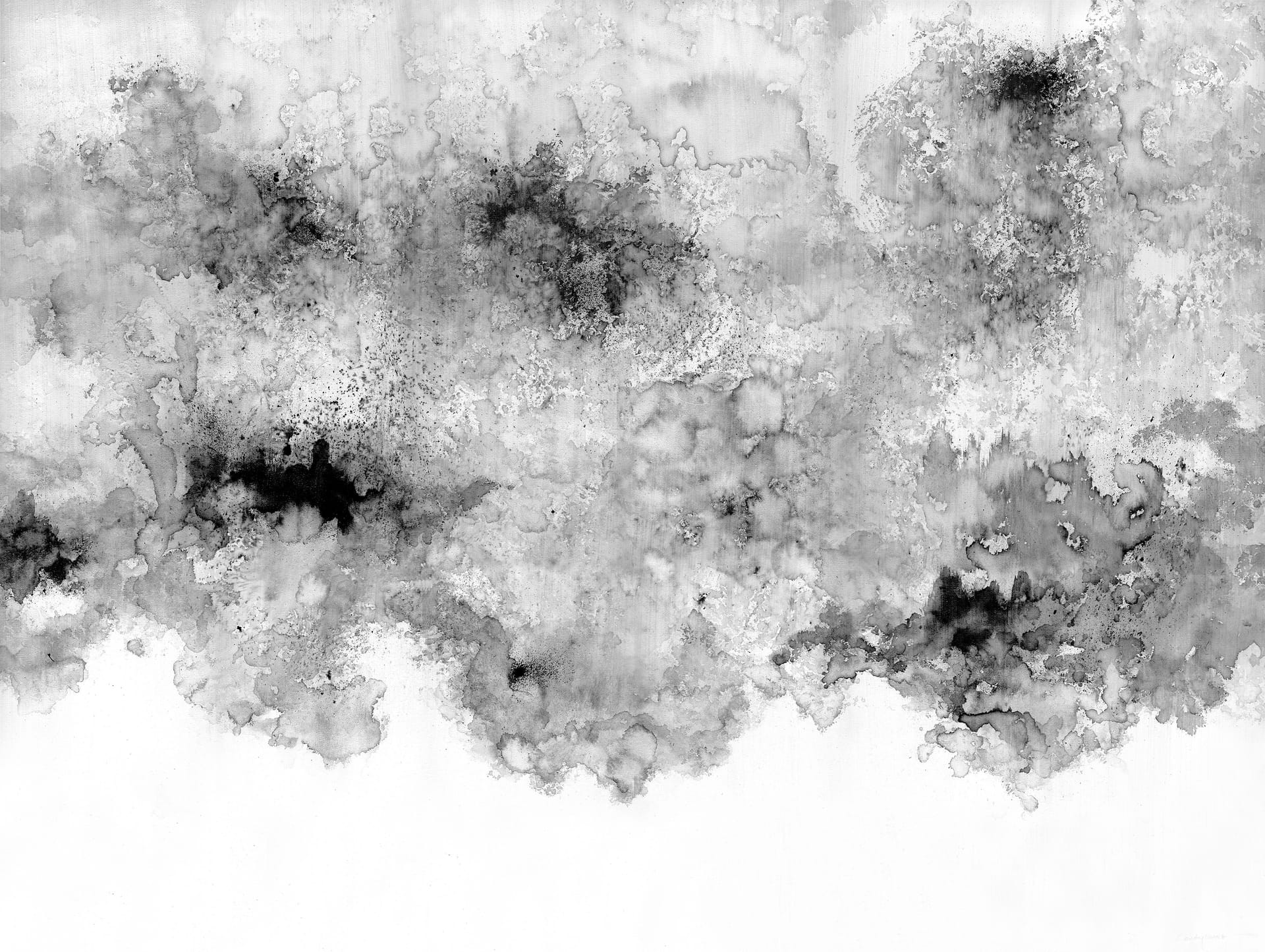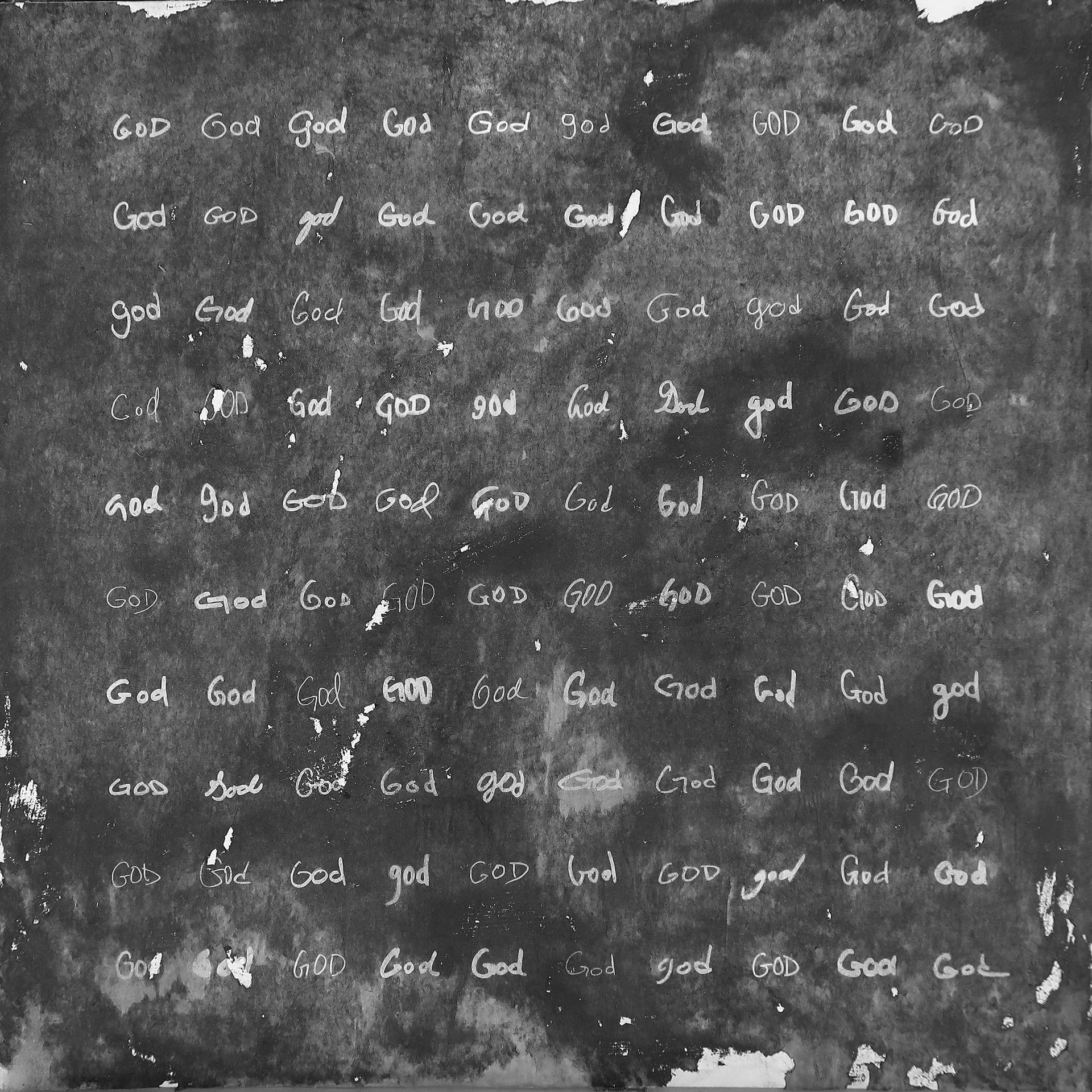The Glyph Series
Handwriting has changed dramatically over the centuries. The history of U.S. penmanship has evolved from a nearly universal application of Spencerian cursive to increasingly expressive idiosyncrasies as digital tools dominate communication. Chang created the Glyph series to commemorate the contemporary expression of the Latin script, the most widely used alphabetic writing system in the world and the foundation of her native English language. Nearly all the world’s alphabets can be traced to the symbols first chiseled on rock walls in Serabit El-Khadim, Egypt around 1850 BCE. Each painting features a letter of the alphabet handwritten by 651 visitors to her installations. Chang hand-cuts and adheres the letters to a penciled grid on canvas, methodically celebrating the personality behind the strokes of this single letterform expressed by the human hand today.

The letter A can be traced to aleph, the first letter of the Phoenician alphabet, which may have originated from the Egyptian pictogram of an ox’s head. When the ancient Greeks adopted the alphabet, they called the three-line form alpha and rotated it to form the shape we still use today.

The letter B can be traced to the Phoenician bēt, meaning “house,” which may derive from the Egyptian hieroglyph shaped like a rectangle with an opening at the base. The shape evolved into two triangles until it became the Greek letter beta, which is the form we still use today.

The letter C can be traced to the Semitic letter gimel, whose form possibly came from the depiction of a camel or the Egyptian hieroglyph for a sling. Originally composed of two straight lines, the Etruscans reduced it to a single curved line, and this basic form remains today.

